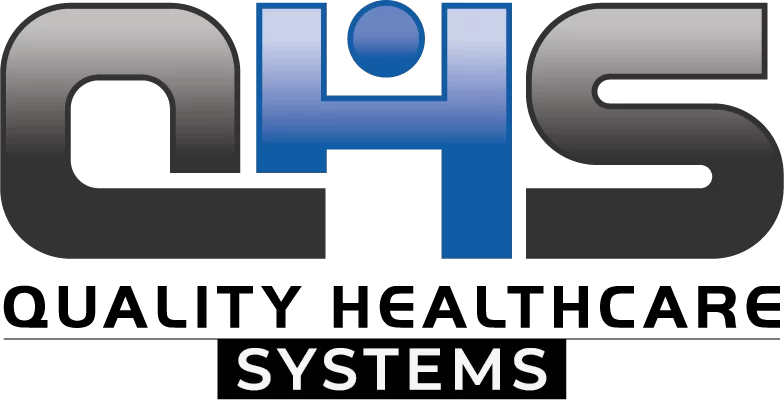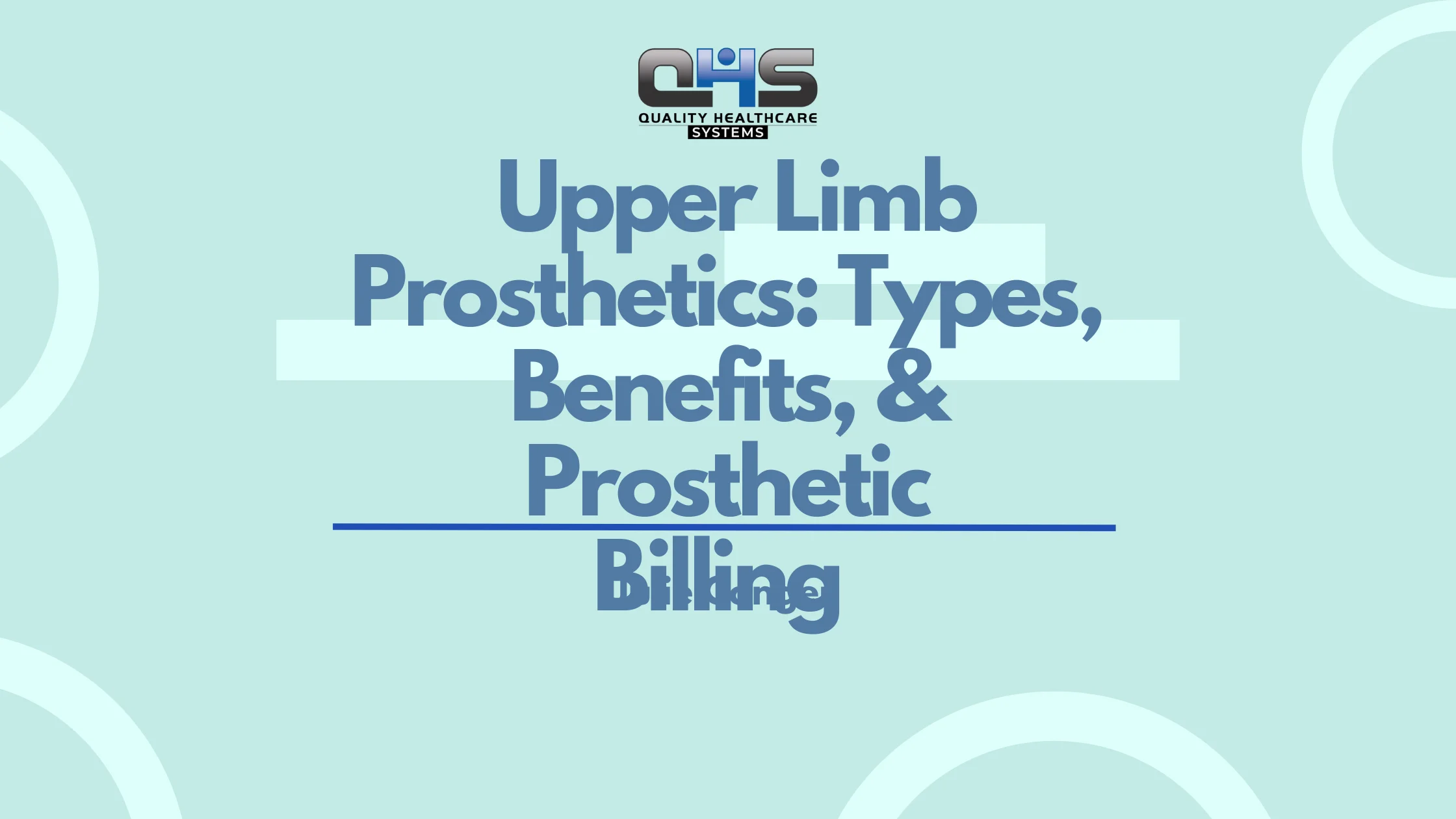Losing an upper limb can be life-altering, but with advancements in prosthetic technology, individuals can regain function, independence, and confidence. From external power prosthetics to myoelectric limbs, the options available today are more advanced and intuitive than ever before.
However, choosing the right prosthetic device requires careful consideration, particularly in terms of functionality, comfort, and fitting. Additionally, navigating the complexities of insurance coverage and billing for these devices can be a daunting task for both patients and healthcare providers.
In this guide, we’ll explore the different types of upper limb prosthetics, their benefits, and how prosthetic billing services can simplify the process for both patients and providers.
What Are Upper Limb Prosthetics and How Do They Work?
Upper limb prosthetics are designed to restore functionality for individuals who have lost their arms or hands due to various reasons, including injury, disease, or congenital conditions. These prosthetic devices aim to not only provide cosmetic restoration but also enhance the user’s independence by allowing them to perform daily tasks that would otherwise be difficult.
There are several types of prosthetics available, ranging from body-powered to externally powered devices, each offering varying levels of functionality and control. With advancements in technology, external power prosthetics, especially myoelectric prosthetics, have become more popular due to their precision and natural movement.
Read: How Insurance Claims Billing for Prosthetic Devices Works
External Power Upper Limb Prosthetics [HCPCS Code range L6920-L6975]
This comprehensive guide explores various upper limb prosthetics, focusing on external power, myoelectric, and switch-controlled devices at different levels.
L6920 – Wrist Disarticulation, External Power, Switch Control
The L6920 code represents a prosthetic device designed for wrist disarticulation with external power and switch control. This device features a self-suspended inner socket and a removable forearm shell, offering flexibility and comfort for the wearer. It includes the essential components, such as a switch, cables, two batteries, and one charger, allowing for efficient control of the terminal device through a simple switch mechanism. This configuration is ideal for users seeking external power-driven functionality with basic switch control for their upper limb prosthetic needs.
L6925 – Wrist Disarticulation, External Power, Myoelectric Control
The L6925 code is for wrist disarticulation prostheses that utilize external power with myoelectric control. It includes a self-suspended inner socket and a removable forearm shell, along with electrodes, cables, two batteries, and one charger. Myoelectric control allows the user to operate the terminal device through muscle signals, offering more precise and intuitive control than basic switch mechanisms. This advanced control system is ideal for users looking for a more responsive and customizable prosthetic experience.
L6930 – Below Elbow, External Power, Switch Control
The L6930 code refers to a below-elbow prosthetic device that operates with external power and switch control. It includes a self-suspended inner socket and a removable forearm shell, along with a switch, cables, two batteries, and one charger. This configuration allows for easy and reliable control of the terminal device using an external switch, making it suitable for users seeking basic but efficient functionality for their prosthetic needs at the below-elbow level.
L6935 – Below Elbow, External Power, Myoelectric Control
The L6935 code is for a below-elbow prosthesis that uses external power and myoelectric control. Similar to the L6925, this device features a self-suspended inner socket, removable forearm shell, electrodes, cables, two batteries, and one charger. The myoelectric control system enables the wearer to operate the terminal device based on electrical signals from their muscles, offering a more advanced and precise means of control compared to switch-based systems. This prosthesis is ideal for users requiring enhanced control and functionality.
L6940 – Elbow Disarticulation, External Power, Switch Control
The L6940 code covers elbow disarticulation prostheses that feature external power with switch control. This device includes a molded inner socket, a removable humeral shell, and outside locking hinges with a forearm. It also comes with a switch, cables, two batteries, and one charger, allowing for the external power-driven control of the terminal device through a switch. The design is suitable for users who need a prosthetic at the elbow disarticulation level and prefer the simplicity of switch-based control.
L6945 – Elbow Disarticulation, External Power, Myoelectric Control
The L6945 code represents an elbow disarticulation prosthesis with external power and myoelectric control. It includes a molded inner socket, a removable humeral shell, outside locking hinges, a forearm, electrodes, cables, two batteries, and one charger. Myoelectric control allows the wearer to control the terminal device through muscle signals, offering a more sophisticated and responsive form of control compared to switch-based systems. This prosthesis is ideal for users at the elbow disarticulation level who seek enhanced control over their prosthetic device.
L6950 – Above Elbow, External Power, Switch Control
The L6950 code covers above-elbow prosthetics that operate with external power and switch control. This device features a molded inner socket, a removable humeral shell, an internal locking elbow, and a forearm. It includes a switch, cables, two batteries, and one charger, providing the user with external power-driven control of the terminal device via a switch. This configuration is ideal for users requiring an above-elbow prosthesis with straightforward switch control for their upper limb functionality.
L6955 – Above Elbow, External Power, Myoelectric Control
The L6955 code represents an above-elbow prosthesis with external power and myoelectric control. It includes a molded inner socket, a removable humeral shell, an internal locking elbow, a forearm, electrodes, cables, two batteries, and one charger. The myoelectric control system allows the user to operate the terminal device by utilizing muscle signals, offering more precise and responsive control compared to switch control. This prosthesis is ideal for individuals who need an above-elbow solution with advanced myoelectric control for enhanced functionality.
L6960 – Shoulder Disarticulation, External Power, Switch Control
The L6960 code refers to a shoulder disarticulation prosthesis that uses external power with switch control. It features a molded inner socket, a removable shoulder shell, a shoulder bulkhead, humeral section, mechanical elbow, and forearm. The device includes a switch, cables, two batteries, and one charger, enabling the user to control the terminal device via an external switch. This configuration is ideal for users requiring a shoulder disarticulation prosthesis with external power and a straightforward switch control mechanism.
L6965 – Shoulder Disarticulation, External Power, Myoelectric Control
The L6965 code represents a shoulder disarticulation prosthesis with external power and myoelectric control. This device includes a molded inner socket, a removable shoulder shell, a shoulder bulkhead, a humeral section, a mechanical elbow, and a forearm. It comes with electrodes, cables, two batteries, and one charger. Myoelectric control allows for more advanced and intuitive control of the terminal device based on muscle signals, making it ideal for users who require a shoulder disarticulation solution with more responsive control.
L6970 – Interscapular-Thoracic, External Power, Switch Control
The L6970 code refers to an interscapular-thoracic prosthesis with external power and switch control. It includes a molded inner socket, a removable shoulder shell, shoulder bulkhead, humeral section, mechanical elbow, and forearm.
This prosthesis comes with a switch, cables, two batteries, and one charger, allowing for control of the terminal device via a switch. This configuration is ideal for users who require a high-level prosthesis with external power and switch-based control at the interscapular-thoracic level.
L6975 – Interscapular-Thoracic, External Power, Myoelectric Control
The L6975 code is for an interscapular-thoracic prosthesis with external power and myoelectric control. It includes a molded inner socket, a removable shoulder shell, shoulder bulkhead, humeral section, mechanical elbow, and forearm, along with electrodes, cables, two batteries, and one charger.
The myoelectric control system enables the user to control the terminal device through muscle signals, providing more precise and responsive control. This prosthesis is ideal for individuals who need a high-level prosthetic solution at the interscapular-thoracic level with advanced myoelectric control.
Read: How Insurance Claims Billing for Prosthetic Devices Works
How Do External Power Prosthetics Differ from Body-Powered Prosthetics?
External power prosthetics use motors and batteries to create movement, often offering greater flexibility and versatility compared to body-powered alternatives. These devices can be controlled through switches or muscle signals, providing more intuitive and precise control.
Body-powered prosthetics, on the other hand, rely on the movement of the user’s remaining body parts, such as the shoulder or chest, to operate the prosthetic limb. Although they are generally more cost-effective and durable, they tend to offer fewer movements compared to their external power counterparts.
What Are Myoelectric Prosthetics and How Do They Improve Functionality?
Myoelectric prosthetics use electrical signals generated by muscle contractions to control the device, offering a natural way for users to control the movements of their prosthetic. This system translates muscle signals into commands, allowing for more complex and precise actions, such as gripping and fine motor tasks.
This innovation provides significant improvement over traditional mechanical control methods, making it easier for users to perform everyday tasks with greater ease. As technology advances, these prosthetics are becoming lighter, more responsive, and even more intuitive, enhancing user experience.
Read: The Biggest Billing Mistakes That Cost DME Providers Thousands
How Can You Choose the Right Prosthetic for Your Level of Amputation?
Choosing the right prosthetic largely depends on the level of amputation. Wrist disarticulation amputees might benefit from lightweight and compact devices, whereas above-elbow or shoulder disarticulation amputees require more robust and advanced prosthetic solutions for enhanced movement.
It’s important to consult with a skilled prosthetist to determine which prosthetic suits your needs best, considering not only the amputation level but also your lifestyle, job requirements, and activity level. Custom solutions will often be recommended for a better fit and comfort.
What Materials Are Used in Manufacturing Prosthetic Devices?
The materials used in prosthetic devices play a crucial role in their comfort, performance, and longevity. Lightweight materials like carbon fiber are frequently used for the frame of the prosthetic, offering a high strength-to-weight ratio.
Other materials, like silicone or thermoplastic, are used in the socket area to ensure comfort and provide a better fit. Advances in 3D printing technology have also enabled more customized prosthetic designs, leading to improved functionality and aesthetics.
Why Is Comfort and Fit Critical in Prosthetic Devices?
The fit of a prosthetic is paramount to ensure both comfort and proper function. A well-fitted prosthetic prevents discomfort, skin irritation, and can even improve the prosthetic’s overall effectiveness. Custom fittings are typically performed by prosthetists to ensure that the device conforms closely to the user’s anatomy.
Adjustable features and soft materials such as silicone or foam padding are also used to improve the comfort level, particularly in areas where the prosthetic contacts the skin.
Read: Orthopedic Medical Billing 101 – A Complete Guide
What Role Do Prosthetists Play in Fitting and Adjusting Prosthetic Devices?
Prosthetists are key to the successful use of prosthetics. They provide expert consultation on fitting, adjusting, and maintaining the device to ensure optimal comfort and functionality. They work closely with the user to make any necessary modifications, ensuring that the device fits correctly and supports the user’s needs.
Additionally, prosthetists offer emotional support during the adjustment period, helping users adapt to their new prosthetic and maximize its functionality.
How Can QHS Prosthetic Billing Services Help with Insurance Claims?
When it comes to managing prosthetic care, dealing with insurance claims can be complex. Prosthetic billing often requires a high level of expertise to navigate, ensuring that all codes and claims are accurately filed for timely reimbursement. QHS Prosthetic Medical Billing Services specializes in handling these billing tasks efficiently, ensuring that providers and users experience a seamless process.
Their team helps maximize insurance coverage, reducing the administrative burden on healthcare providers and ensuring patients get the coverage they deserve. With QHS’s expertise, prosthetists can focus more on patient care and less on paperwork.
How Do You Maintain and Care for Your Prosthetic Device?
Proper maintenance of your prosthetic device is crucial to ensure its longevity and optimal performance. Regular cleaning, inspection for wear and tear, and adherence to manufacturer guidelines are necessary steps for maintaining your prosthetic.
For external power prosthetics, it’s essential to follow specific battery care guidelines, such as ensuring the device is fully charged after each use and avoiding overcharging. Routine maintenance ensures that your device continues to function effectively, and timely repairs can prevent costly replacements.
What Are the Costs Associated with Prosthetic Devices and Their Insurance Coverage?
The cost of prosthetics can vary depending on factors like type, functionality, and materials used. Advanced prosthetics, such as myoelectric limbs, tend to be more expensive than traditional body-powered devices.
Many insurance policies offer partial or full coverage for prosthetics, but understanding the terms of your insurance is essential. Some users may need to consult with their prosthetist or insurance representative to clarify coverage details, ensuring that their prosthetic needs are fully met.
What Benefits Do Myoelectric Prosthetics Offer Over Traditional Models?
Myoelectric prosthetics provide a level of precision and control that traditional prosthetics cannot match. By using muscle signals to control the prosthetic, these devices allow for more fluid and natural movements, enabling users to perform a wider range of tasks with greater ease.
This technology offers significant advantages for those who require a high degree of dexterity, such as individuals returning to work or participating in hobbies that require fine motor skills.
How Can Prosthetic Medical Billing Services Benefit Healthcare Providers?
Prosthetic billing is an essential part of the healthcare system, but it can be challenging due to the complexities involved in coding and insurance claims. Quality Health Services Prosthetic Medical Billing Services simplifies this process by handling all aspects of billing, from insurance verification to claims submission.
This service ensures that providers receive accurate reimbursements and minimizes errors in the billing process, allowing healthcare providers to focus on delivering quality care to patients without the distraction of administrative tasks.
Conclusion:
Upper limb prosthetics are transforming lives by providing users with greater independence and the ability to perform daily tasks. Whether you choose a body-powered, externally powered, or myoelectric device, each offers distinct advantages based on your specific needs and lifestyle. Additionally, understanding the complexities of prosthetic billing and insurance claims can be overwhelming. This is where QHS Prosthetic Medical Billing Services can help, ensuring that the administrative side of prosthetic care is handled efficiently, allowing healthcare providers to focus on what they do best—caring for patients.






